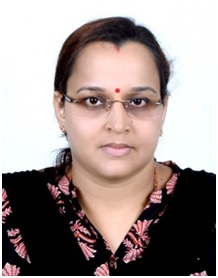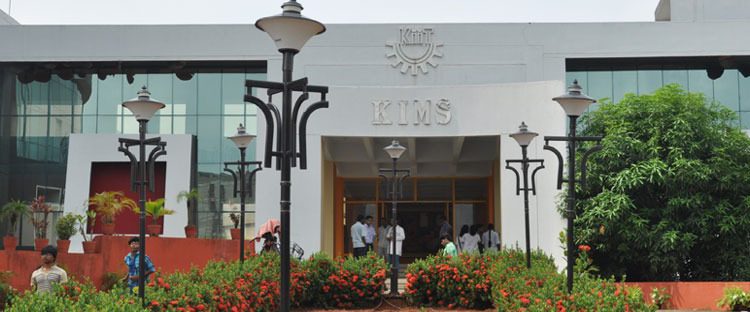Mask: Prevention is Better than Cure Dr. Basanti Pathi, Associate Professor, Dept of Microbiology, KIMS
Masks are a simple barrier to help prevent your respiratory droplets from reaching others. By definition mask is a cover or partial cover for the face used for disguise; a figure of a head worn on the stage in antiquity to identify the character and project the voice; a grotesque false face worn at carnivals or in rituals; an often grotesque carved head or face used as an ornament (as on a keystone); a sculptured face or a copy of a face made by means of a mold; a device usually covering the mouth and nose to facilitate delivery of a gas (such as a general anesthetic); a comparable device or a covering (as of polypropylene fiber or cotton fabric) to prevent inhalation of dangerous substances or to prevent the inhalation or dispersal of exhaled infectious material (such as bacteria or viruses).

Medical masks are surgical or procedure masks that are flat or pleated (some are like cups); they are affixed to the head with straps. Wearing a medical mask is one of the prevention measures to limit spread of certain respiratory diseases, including 2019- nCoV, in affected areas.
History
The word “mask” appeared in English in the 1530s, from the Middle French masque “covering to hide or guard the face”, derived in turn from Italian maschera, from Medieval Latin masca “mask, specter, nightmare”. The use of masks in rituals or ceremonies is a very ancient human practice across the world, although masks can also be worn for protection, in hunting, in sports, in feasts, or in wars – or simply used as ornamentation. Some ceremonial or decorative masks were not designed to be worn. Although the religious use of masks has waned, masks are used sometimes in drama therapy or psychotherapy.
Types of mask:
1. Medical purposes
2. Protective
3. Occupational
4. Sports, etc.
Masks used for medical purposes are:
· Oxygen mask, a piece of medical equipment that assists breathing.
· Anesthetic mask.
· Burn mask, a piece of medical equipment that protects the burn tissue from contact with other surfaces, and minimises the risk of infection.
· Surgical mask, a piece of medical equipment that helps to protect both the surgeon and patient from acquiring infection from each other.
· Face shield, to protect a medical professional from bodily fluids.
· Pocket mask or CPR mask, used to safely deliver rescue breaths during a cardiac arrest or respiratory arrest.
Mask and COVID19
Masks should be used as part of a comprehensive strategy of measures to suppress transmission and save lives; however, the use of a mask alone is insufficient to provide the adequate level of protection and other equally relevant measures should be adopted. If masks are to be used, this measure must be combined with hand hygiene and other IPC measures to prevent the human-to- human transmission of 2019-nCov.
How to wear a mask:
• Clean your hands before you put your mask on, as well as before and after you take it off, and after you touch it at any time.
• Make sure it covers both of your nostril, mouth and chin.
• When you take off a mask, store it in a clean plastic bag, and every day either wash it if it’s a fabric mask, or dispose of a medical mask in a trash bin.
• Don’t use masks with valves.
Masks should be worn:
- By people 2 years of age and older
- Any time you are in a public setting
- Any time you are travelling on a plane, bus, train, or other form of public transportation.
- When you are around people who do not live with you, including inside your home or inside someone else’s home
- Inside your home if someone you live with is sick with symptoms of COVID-19 or has tested positive for COVID-19
CDC recognizes there are specific instances when wearing a mask may not be feasible. In these instances, consider adaptations and alternatives.
The following categories of people are exempt from the requirement to wear a mask:
- A child under the age of 2 years;
- A person with a disability who cannot wear a mask, or cannot safely wear a mask, for reasons related to the disability;
- A person for whom wearing a mask would create a risk to workplace health, safety, or job duty.
CDC does not recommend using face shields or goggles as a substitute for masks. Goggles or other eye protection may be used in addition to a mask. Do NOT put a plastic face shield (or a mask) on newborns or infants.
Mask adaptations and alternatives
CDC recognizes that wearing masks may not be possible in every situation or for some people. Those who cannot wear a mask are urged to prioritize virtual engagement when possible. For in-person activities, we have provided a few examples of what you can do to make wearing a mask more feasible and how to reduce the spread of COVID-19 if you cannot wear a mask.
Situations where wearing a mask may not be possible
Make sure to maintain physical distance from others when you cannot wear a mask.
What to do if you find wearing a mask uncomfortable?
It may help to practice wearing a mask at home for short periods to get used to the feeling and try different styles and fabrics recommended above.
Try relaxation techniques such as breathing in and out deeply or listening to soothing music while wearing a face mask, which can help to keep you calm.


